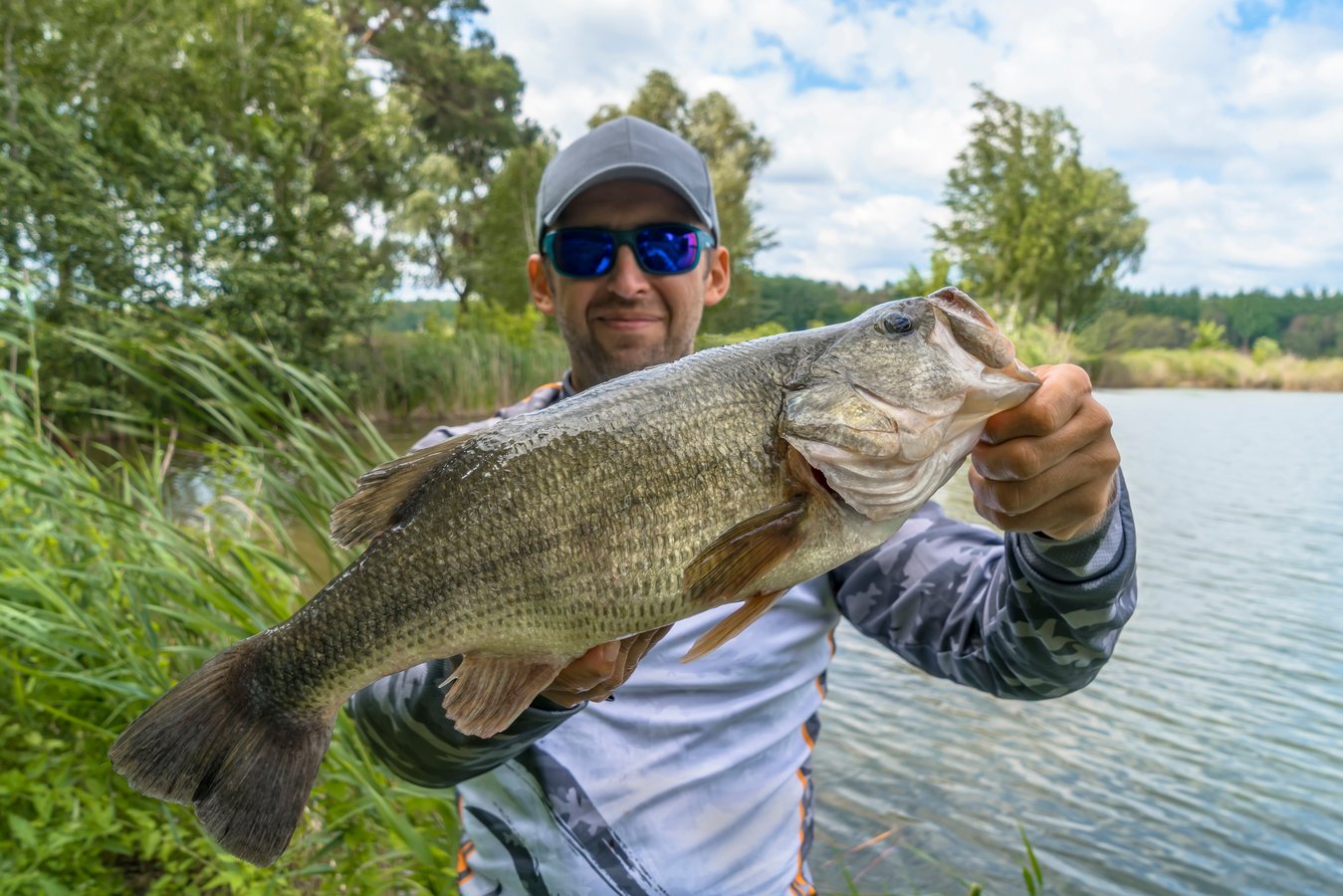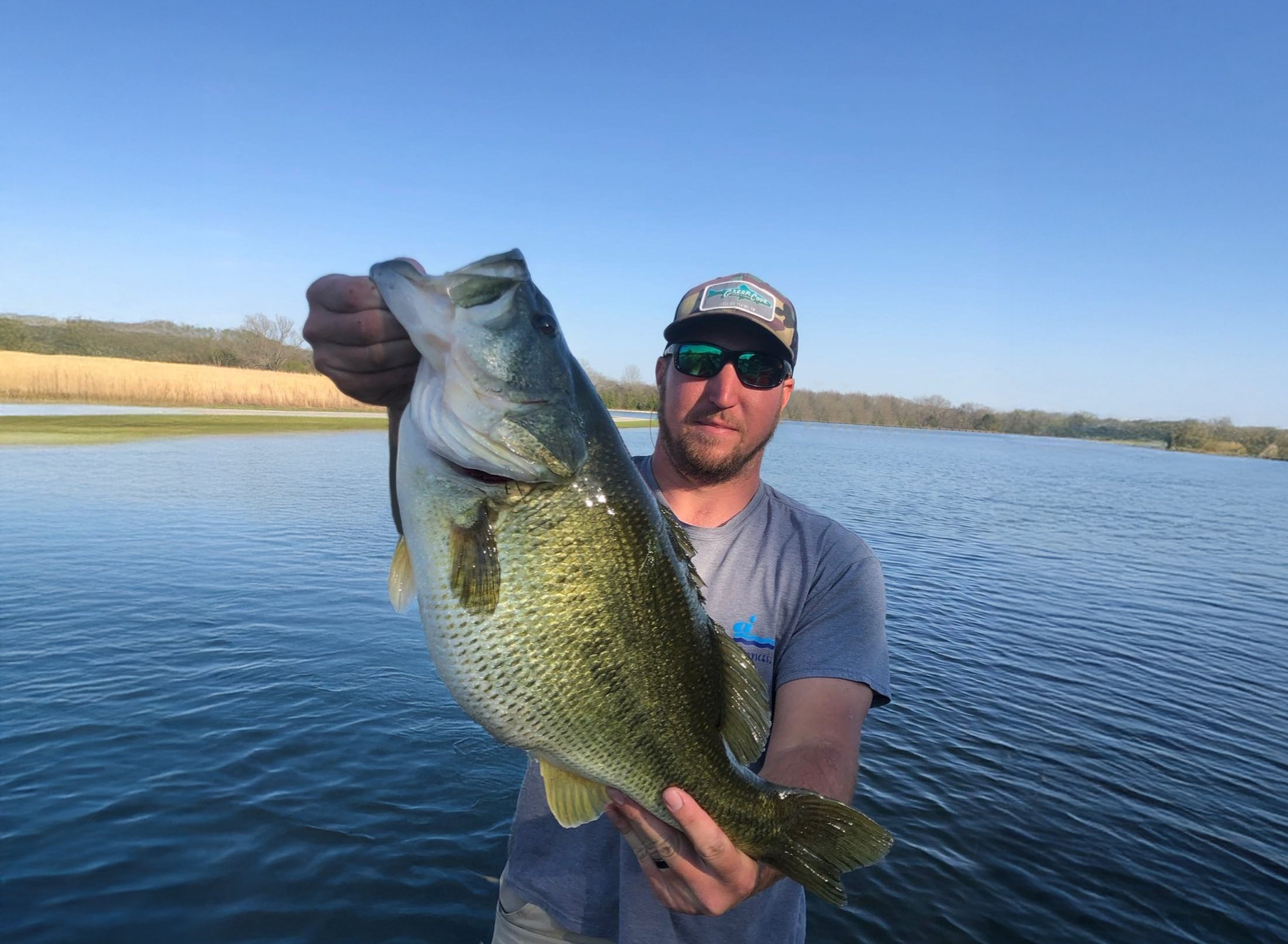September Pond & Lake Management in Alabama: Setting Up Trophy Bass for Success

As summer slowly gives way to cooler September days in the Southeast, pond and lake ecosystems in Alabama begin a period of transition. For landowners and anglers, this change brings both challenges and opportunities—especially when the goal is to grow and sustain trophy bass in Georgia, Arkansas and Alabama waters.
Seasonal Shifts in Southeastern Ponds
In the Southeast, September often brings shorter days and gradually cooling water temperatures, but rainfall patterns can remain unpredictable. These shifts in light and temperature reduce photosynthesis among aquatic plants, lowering oxygen production and creating the potential for dissolved oxygen swings.
At the same time, warm water temperatures continue to fuel plankton growth. Without consistent rainfall to replenish nutrients, this can lead to plankton “crashes”—sudden die-offs that not only reduce oxygen production but also increase oxygen demand through decomposition. For fish, this can mean stress, sluggish feeding, or in severe cases, fish kills.
A properly-sized aeration system is one of the best tools for Southeastern lake owners to stabilize oxygen levels and protect fish health during these late-summer fluctuations.
Largemouth Bass Activity in September
In Alabama, Georgia and other states in the Southeast, largemouth bass are particularly active during early fall. As water temperatures begin their slow descent, bass ramp up their feeding behavior to build reserves for the cooler months ahead. This is prime time for anglers chasing trophy bass in Georgia and Alabama, as fish are more aggressive and eager to ambush prey.
Bass often concentrate around structure such as submerged logs, aquatic vegetation, and rock piles. These areas provide cover for ambush feeding and support a stronger forage base. Installing or enhancing fish habitat during this season ensures bass have consistent feeding opportunities and cover year-round.
Bluegill and Forage Fish Adjustments
Bluegill and other forage species also shift their behaviors as conditions change. In early fall, bluegill can often be found in shallower water, taking advantage of lingering warmth and insect activity. Their movement and feeding patterns make them more vulnerable to predators—an important factor in supporting strong bass growth.
To keep predator-prey dynamics balanced, September is an ideal time to consider supplemental forage fish stocking. By adding fathead minnows, golden shiners, or small bluegill, pond owners can:
• Reduce competition for food among existing fish
• Provide consistent nutrition for largemouth bass and other predators
• Establish a breeding population of forage species for long-term sustainability
This practice helps support healthier fish populations and creates better angling opportunities throughout the fall and winter.
Preparing Ponds for Seasonal Transition
September represents a key opportunity for Southeastern pond and lake owners to prepare their waters for the months ahead. By focusing on:
• Aeration to stabilize oxygen levels
• Habitat installation for forage and predator species
• Forage fish stocking to sustain predator growth
You set the stage for healthier ecosystems and stronger sportfishing outcomes—whether your goal is a balanced pond or producing trophy bass in Georgia and Alabama.
About Aqua Services, A Jones Lake Management Partner
Since 1983, Aqua Services has been a trusted leader in lake and pond management, delivering scientifically backed solutions to create and maintain healthy, balanced, and beautiful waterbodies. As a Jones Lake Management Partner, our team specializes in a full range of services to include algae and aquatic weed control, aeration systems, water quality monitoring, fisheries management, hydraulic dredging, invasive species control, and shoreline restoration. We work with HOAs, municipalities, golf courses, and private lake owners throughout Alabama, Arkansas and Georgia to maintain balanced and thriving aquatic environments through science-based and sustainable management practices.
Topics
- Aeration (3)
- Algae (3)
- Aquatic Weeds & Algae Control (6)
- Bathymetry Mapping (1)
- Company News & Updates (1)
- Erosion Control & Sediment Reduction (4)
- Fisheries Management (10)
- Fountains & Aeration (6)
- Hydraulic Dredging (2)
- Invasive Species Management (3)
- Lake & Pond Management (12)
- Lake Management (4)
- Nutrient Management (7)
- Pond Management (1)
- Sediment Sampling (3)
- Storm-Water Basins & Pollution (1)
- Stormwater & Runoff Management (4)
- Water Quality (3)
- Water Quality Monitoring (1)

Our fisheries management programs are designed to meet your specific goals—whether that’s trophy bass production, family-friendly fishing, or enhancing the overall ecological balance of your pond.